This is the second in a series of writeups on challenges from the BSidesSF CTF. You can see a writeup of the first challenge, Blink, here
Yay Or Nay was the second mobile challenge in the CTF, this time worth 200 points. Like last time, we start out with a prompt and an apk file. This time the prompt came in a little more handy.
Keep track of places you would love / hate to see, by dropping markers with a simple click. Try YayorNay v1.2 today!
:::: Updated README :::: v 1.0 - Added short press, Yay support - Fix stability issues
v 1.1 - Added long press, Nay support - Add labels
v 1.2 - Populate from DB - Save to DB
To-do - Fix stability issues - Bug fixes - Implement feature to view by day
First things first, let’s launch the app.
$ adb install YayorNay.apk
SuccessThe app opens up with some instructions on how to use it and a button to get started.
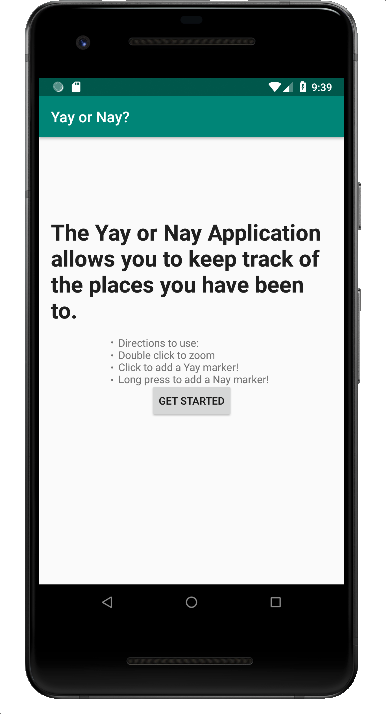
clicks get started
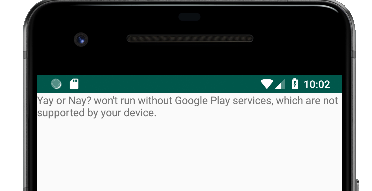
Well, looks like our root-enabled emulator image isn’t going to work out here. Let’s launch a Google Play Services enabled one! Unfortunately these images are a little more locked down and we won’t be able to (easily) get root on them.
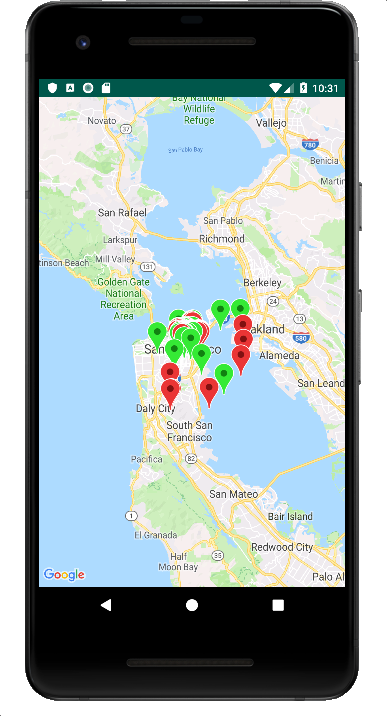
Ok, so we have a map of San Francisco with a bunch of markers. Let’s zoom around and see if anything sticks out. This may have been the worst part of the challenge, zooming and panning with an emulator can get tedious 😄

Right in the middle of everything there’s a grid of some sort. It seems like the next step should be to isolate it. I know from the challenge prompt that these pins are being loaded from a database so I’ll go looking for the app’s sqlite db.
1. Find the package that contains our yayornay app.
$ adb shell pm list packages | grep yayornay
package:com.example.yayornay2. Switch to that package’s user
$ adb shell
generic_x86:/ $ run-as com.example.yayornay3. Find the app’s database
generic_x86:/data/data/com.example.yayornay $ ls
cache code_cache databases files shared_prefs
generic_x86:/data/data/com.example.yayornay $ cd databases
generic_x86:/data/data/com.example.yayornay/databases $ ls
Location.db Location.db-journal4. List the tables in that database
generic_x86:/data/data/com.example.yayornay/databases $ sqlite3 Location.db
SQLite version 3.18.2 2017-07-21 07:56:09
Enter ".help" for usage hints.
sqlite> .tables
android_metadata locations5. Inspect the table schema
sqlite> .schema locations
CREATE TABLE IF NOT EXISTS "locations" (
`date` TEXT,
`latitude` REAL,
`longitude` REAL,
`color` REAL
);We can see that the database has a list of lat,long pairs each with a date and a color. My first guess is that these correspond to the pins we saw on the map. Let’s dump the data and see what we get.
sqlite> SELECT * FROM locations LIMIT 5;
02/03/2019|37.7842927|-122.4053593|120.0
02/03/2019|37.7838412|-122.4041845|0.0
02/07/2019|37.7863323436302|-122.42828886956|120.0
02/07/2019|37.7851367932719|-122.402353584766|120.0
02/07/2019|37.782343920755|-122.404699847102|0.0Looks like a list of dates, coordinates in and around San Francisco, and the hues for green (120) and red(0)! The next thing I did was go off of the prompt Bug fixes - Implement feature to view by day and check each day one by one.
generic_x86:/data/data/com.example.yayornay/databases $ cp Location.db Location.db.bak
generic_x86:/data/data/com.example.yayornay/databases $ echo "delete from locations where date!='02/03/2019';" | sqlite3 Location.db
generic_x86:/data/data/com.example.yayornay/databases $ echo "select distinct date from locations;" | sqlite3 Location.db
02/03/2019Back up the database, delete any records that don’t match a given date, reload the app, restore the database, and repeat! Soon enough, on 02/08/2019 we see:
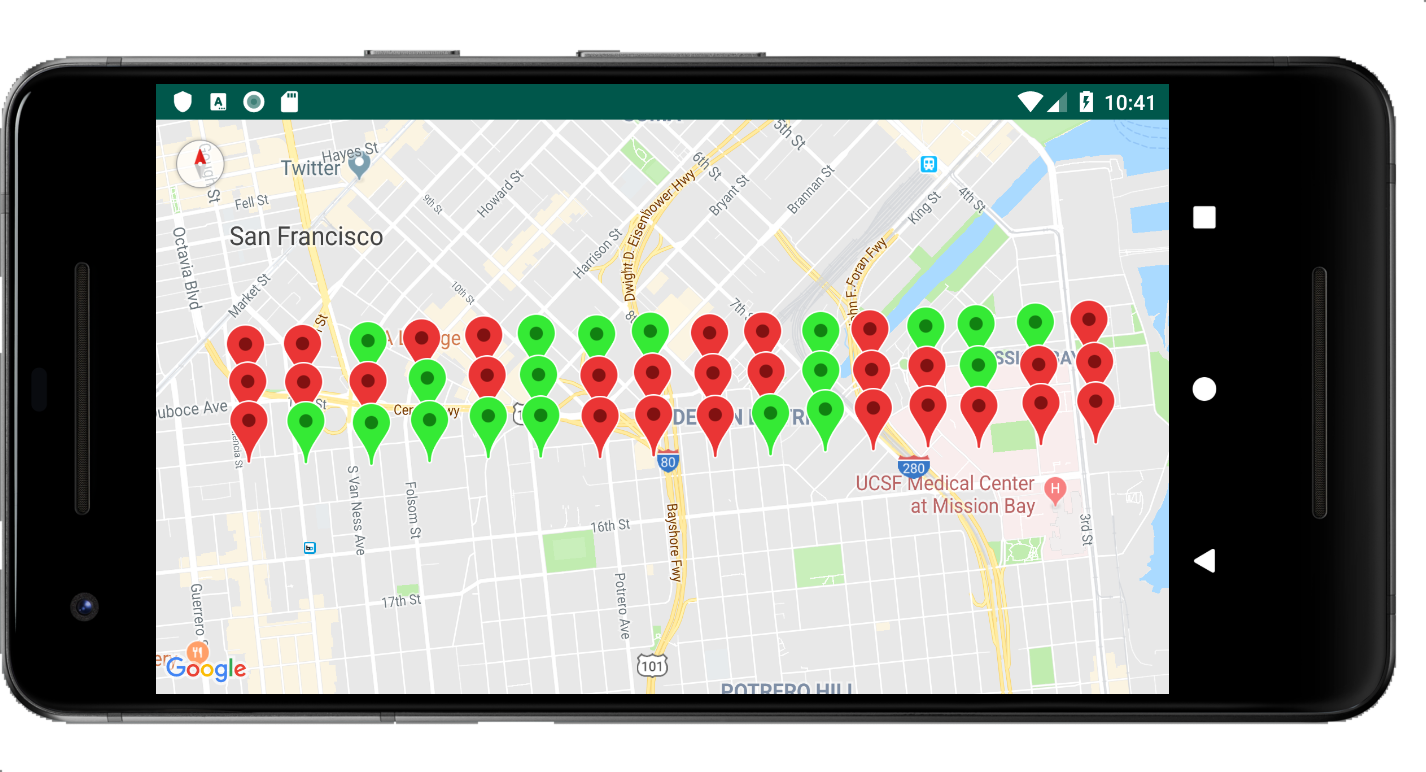
At this point I had more or less no idea what I was looking at. Luckily a teammate connected the dots (pun intended) between a grid 3 rows high and braille!
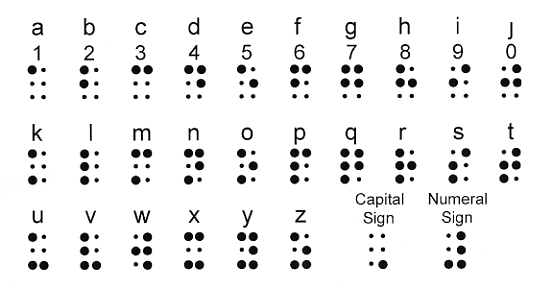
Using the green pins as raised points, we can decode the flag to Z3lda!
